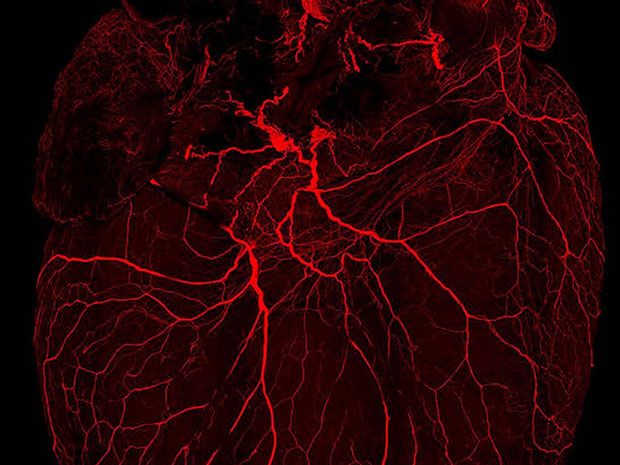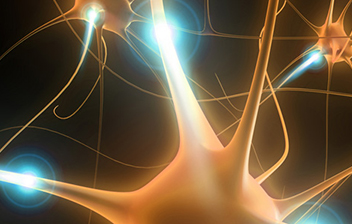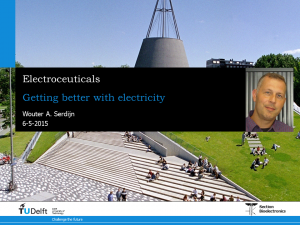Gadgets die werken als medicijnen. Het is de toekomst als een groeiende groep farmacie- en technologiebedrijven zijn zin krijgt. Googles moederbedrijf Alphabet kondigde vorige week een samenwerking aan met farmareus GlaxoSmithKline (GSK) op het gebied van zogeheten bio-elektronica, minuscule implanteerbare apparaatjes die via elektrische signalen ziektes kunnen genezen en voorkomen. Ook Apple en Samsung werken al een tijdje aan bio-elektronica en biosensoren: meetapparaatjes voor lichamelijke functies die je zowel buiten als binnen in je lijf kunt dragen.
Apple en Samsung hebben, net als Google, bovendien steeds nauwere banden met de farmaceutische industrie. Googles zusterbedrijf Verily, dat zich helemaal richt op farmaceutische toepassingen, sloot op andere gebieden al eerder samenwerkingen met Johnson & Johnson en Novartis. Apple werkt ook samen met GSK, en Samsung investeert veel om zelf meer een farmaceutisch bedrijf te worden.
Dat juist bedrijven uit de consumententechnologie ineens zo geïnteresseerd zijn in de farmacie, en vooral in de bio-elektronica, roept interessante vragen op. Met name over privacy: behalve informatie óver mensen, kunnen technologiebedrijven dankzij bio-elektronica straks namelijk ook data verzamelen ín mensen.
„Ik ben er niet gerust op”, zegt Wouter Serdijn, hoogleraar bio-elektronica aan de TU Delft en London University College. „Een bedrijf als Google weet al heel veel van je, en juist als je gegevens uit bio-elektronica combineert met grote hoeveelheden andere data, ontstaan mogelijk interessante inzichten over de gezondheid van individuen.”
Die inzichten kunnen nuttig zijn voor de genezing van bepaalde aandoeningen, maar er zitten ook privacyrisico’s aan. Ook de Haagse technologiedenktank Rathenau Instituut spreekt al jaren zijn zorgen uit over privacygevolgen van geïmplanteerde elektronica.
Wat kunnen techbedrijven nou precies te weten komen ín een lichaam? „Het gaat met de huidige bio-elektronica vooral om de communicatie tussen cellen of bijvoorbeeld informatie over de zuurtegraad in je darmen”, zegt Serdijn. Volgens hem is de informatie die uit bio-elektronica en -sensoren komt op zichzelf commercieel nog niet direct heel bruikbaar. Maar gecombineerd met andere informatie, over bijvoorbeeld lichaamsbeweging, zijn daar mogelijk wel interessante patronen in te ontdekken. „Dan zou je er mogelijk zaken als epileptische aanvallen mee kunnen voorspellen, en misschien wel andere ernstige aandoeningen”, zegt Serdijn. En dat is informatie die je niet altijd wilt delen met je werkgever of verzekeraar.
GSK wil geen details geven over hoe het informatie uit bio-elektronica precies gaat delen met Googles zusterbedrijf Verily. Wel zegt woordvoerder Carien Mulder: „Wij staan honderd procent voor het waarborgen van vertrouwelijke patiënteninformatie, en dat is ook een prioriteit in de nieuwe samenwerking met Verily.” Ze geeft echter geen antwoord op wat er precies is afgesproken over de data die er worden verzameld in het lichaam.
Een woordvoerder van Alphabet kon niet op tijd reageren op vragen van NRC. Wel zei Brian Otis, de technologiedirecteur van Alphabet-dochter Verily, vorige week tegen het Amerikaanse Forbes Magazine dat het zijn bedrijf bij deze samenwerking vooral te doen is om de data. „De uitdaging met bio-elektronica zit ’m uiteindelijk in data. Het uitlezen en interpreteren van de signalen. Natuurlijk heeft Google expertise in het omgaan met grote hoeveelheden data, beslissingen nemen op basis van data en feedback geven aan de gebruiker.”
Google beschikt over enorm veel gegevens over menselijk gedrag. Via de Android-smartphones van het bedrijf verzamelt het ook veel informatie over bijvoorbeeld lichaamsbeweging. Het blijkt bij dit soort big data-toepassingen vaak erg lastig om verbanden tussen gegevens te ontdekken die ook echt bruikbaar zijn. Maar juist een bedrijf als Google is daar heel goed in.
Informatie uit bio-elektronica zou ook bepaald niet de eerste medische data zijn die Google de laatste tijd verzamelt. Via de zoekmachine ziet het bedrijf al jaren welke medische vragen bezoekers stellen. Via zusterbedrijf 23andMe, dat genetische tests ontwikkelt, heeft Google de laatste jaren daarnaast van vele duizenden mensen DNA-informatie verzameld. Onlangs sloot het een samenwerking met de Britse National Health Service voor het analyseren van grote hoeveelheden patiëntengegevens van Britse burgers.
Dat zijn zeer uiteenlopende projecten, met ook zeer uiteenlopende privacyvoorwaarden. Het is niet automatisch zo dat Google met die informatie allerlei gedetailleerde profielen opbouwt die het zomaar kan herleiden tot individuen. Laat staan dat het die zomaar kan doorverkopen, als het bedrijf dat al zou willen. Er gelden voor medische gegevens strengere privacywetten dan voor andere soorten informatie.
Maar de Amerikaanse technologiereus verdient wel veruit het meeste van zijn geld met op maat gemaakte advertenties. En als je advertenties op basis van je zoekgeschiedenis krijgt voorgeschoteld, waarom dan niet op basis van data uit een biosensor die uitwijst dat je binnenkort misschien behoefte krijgt aan een bepaald medicijn?
„Zover is het voorlopig waarschijnlijk nog niet,” zegt hoogleraar Serdijn. „Maar het is wel zaak om dit heel goed in de gaten te houden.”
HOE BIG PHARMA EN BIG TECH SAMENWERKEN
Apple sloot in juli een samenwerking met Glaxo Smith Kline (GSK) om behandelingen te ontwikkelen voor reuma. GSK gaat daarvoor Apples onderzoekssoftware ResearchKit gebruiken. Dat platform brengt allerlei gegevens samen die Apple over zijn gebruikers verzamelt, bijvoorbeeld over lichaamsbeweging. Die is te meten via de bewegingssensoren in iPhones. Dergelijke sensoren kunnen volgens de twee bedrijven ook worden gebruikt om nauwkeuriger in kaart te brengen hoe reuma het leven van patiënten beïnvloedt.
Googles zusterbedrijf Verily werkt samen met Novartis om een slimme contactlens te ontwikkelen die bloedsuiker meet in het oogvocht van diabetespatiënten. Zo’n lens zou in de plaats kunnen komen van andere manieren om bloedsuikers te meten, bijvoorbeeld van de bloedprikken die nu gebruikelijk zijn.
Telefoonmaker Samsung investeert ook fors in biotech en farmacie, onder meer via Samsung Bioepis en Samsung Biologics.









